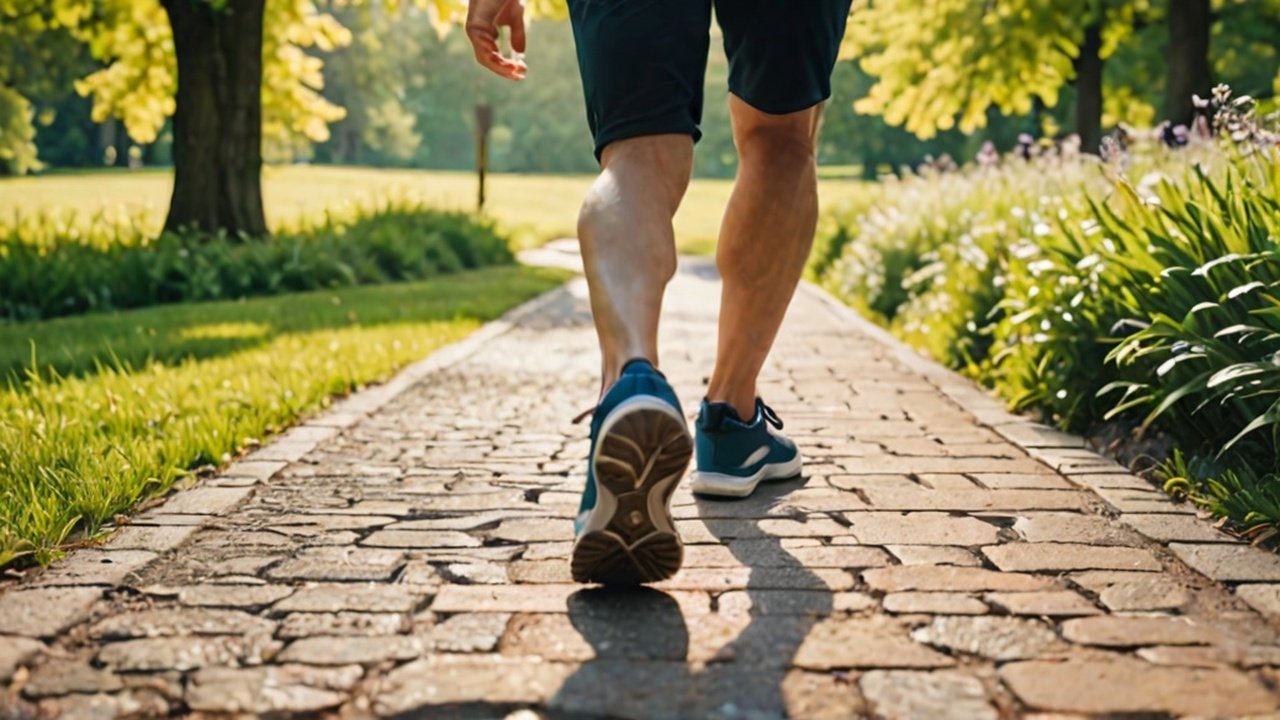Stride Into Longevity: How Walking Keeps You Young At Heart.
The Timeless Perks of Walking: Why Your Future Self Will Thank You
Let’s face it: aging is like that unexpected houseguest who overstays their welcome. One day, you’re doing cartwheels in the backyard, and the next, you’re debating whether or not you need a nap after climbing a flight of stairs. But here’s the good news: no matter how many candles are on your birthday cake, walking is the year-round, all-weather, perfect antidote to the effects of aging. Add good nutrition in the mix and you can supercharge your body into a healthier you as you age.
Whether you’re briskly walking in crisp fall air, power-walking on a breezy summer day, or bundled up in layers for a winter stroll, the benefits of walking never take a season off. And guess what? Your body loves it. Here’s why walking is the ultimate life hack for staying young, happy, and healthier as the years pile on.
The Science of Stride: What Happens When You Walk
When you lace up your sneakers and hit the pavement, your body goes into motion—and it’s not just your feet. Walking triggers a cascade of biological responses that benefit every part of your system. Let’s take a closer look under the hood:
Your Heart Says "Thank You" Walking, even at a leisurely pace, helps to strengthen the cardiovascular system. It increases blood flow, improving oxygen delivery to your cells. This means your heart doesn’t have to work as hard. Regular walking lowers blood pressure, reduces bad cholesterol (LDL), and increases good cholesterol (HDL), all of which keep those arteries clear and functioning. Walking is like a gentle, daily oil change for your heart.
Blood Sugar Balancing Act Have a big meal? Go for a walk afterward. Walking helps stabilize your blood sugar levels by improving your body’s insulin sensitivity. This is especially important as we age because our cells become less responsive to insulin, leading to higher blood sugar levels. Regular walking keeps this process in check and can reduce the risk of type 2 diabetes.
Joint Lubrication for the Aging Machine Contrary to popular belief, walking doesn’t harm your joints—it actually helps lubricate them. As we age, joint cartilage can wear down, leading to creaks and groans that can make us sound like a walking antique shop. But when you walk, the movement encourages the production of synovial fluid, which lubricates your joints. Walking is like the WD-40 for your knees and hips.
Muscle Maintenance (aka: Don’t Turn Into a Noodle) Muscle mass naturally declines with age, a phenomenon charmingly called sarcopenia. By the time you hit 50, you might start noticing that lifting a grocery bag feels like deadlifting a boulder. Walking helps slow this decline by keeping your muscles engaged. It’s a low-impact way to keep those legs, glutes, and even your core muscles working, ensuring you don’t start folding like a lawn chair.
Mental Health Bonus Round Your brain also loves a good stroll. Walking releases endorphins, those lovely feel-good chemicals that make you feel less like a grumpy cat and more like a golden retriever. Plus, it reduces levels of cortisol, a stress hormone that not only messes with your mood but also accelerates aging (yes, cortisol is that friend who ruins the party). Walking helps keep anxiety, depression, and general stress at bay, making you a happier, more pleasant version of yourself.
Walking Through the Years: The Aging Process and Exercise
Pick a Good Sneaker!
First things first, pick out a good sneaker, because staying active is as close as it gets to slowing the effects of aging.
30s: The Wake-Up Call
By your 30s, your metabolism starts to slow down a bit, meaning your body isn’t burning calories at the same rate it used to. This is when some people notice that extra slice of pizza likes to stick around a little longer. Regular walking helps keep that metabolism humming along, so you’re less likely to feel like a sloth after every meal.
40s: The Maintenance Years
As you inch into your 40s, you might notice your flexibility and muscle tone starting to decline. Walking helps maintain muscle mass and bone density, especially if you’re doing brisk walks or adding a few inclines to your route. It’s also great for boosting energy levels (because those afternoon crashes don’t get any easier). And let’s not forget the mental clarity: walking has been shown to improve memory and cognitive function, so you’ll be better equipped to remember where you put your keys.
50s and Beyond: Keeping Things in Motion
By the time you hit your 50s and beyond, regular exercise like walking becomes crucial for maintaining independence and mobility. At this stage, it’s not just about looking good—it’s about making sure you can still do the things you love, like gardening, traveling, or chasing after grandchildren. Walking also helps prevent osteoporosis by maintaining bone strength, and it keeps your heart and lungs in top condition, so you’re more likely to live longer, healthier years.
Walking in All Seasons: The Year-Round Perks
Whether you’re strolling through springtime blossoms or navigating the frosty air of winter, walking is the most adaptable form of exercise. You don’t need fancy equipment, and you can do it just about anywhere.
Walk any time of year.
Winter: Bundle up, and walking can warm you from the inside out, boosting circulation and improving your mood during those darker months. Plus, it’s a great way to keep the holiday weight at bay.
Spring: With the flowers blooming and birds chirping, walking is a great way to shake off the winter blues. It’s like nature’s way of saying, “Hey, wake up and move!”
Summer: Early morning or late evening walks in the cooler part of the day can help you stay active without overheating. Bonus points if you get some fresh, ocean-scented air!
Fall: Cooler temperatures and colorful scenery make fall one of the most enjoyable walking seasons. Plus, it’s the perfect excuse to layer up in those cozy sweaters you’ve been waiting to wear.
Tips to Make Walking More Fun
If walking sounds like a bore, you’re probably doing it wrong. Here’s how to mix it up:
Get a Podcast or Audiobook: Turn your walks into a chance to catch up on the latest episode of your favorite podcast or dive into that novel you’ve been meaning to read.
Walk with Friends: Walking with a buddy can make time fly and also hold you accountable to keep moving.
Explore New Routes: Don’t just walk the same old block—find a local park, hiking trail, or a different neighborhood to explore. Your brain loves new stimuli, and walking a different route keeps things interesting.
Bring the Dog: If you have a furry friend, walking is a must. Your dog will love the exercise, and you’ll enjoy the company.
The Bottom Line
Walking is your body’s best friend, no matter your age. It strengthens your heart, keeps your joints moving, boosts your mood, and helps you stay sharp as the years go by. Plus, it’s free, it’s easy, and you can do it year-round.
So, the next time you think about putting off exercise because "you’ll start tomorrow," remember that your future self is counting on you. The best part? It’s never too late to start. Whether you're 30, 50, or 70, your body will thank you for every step you take.
Purchases made on this site may result in a commission.




